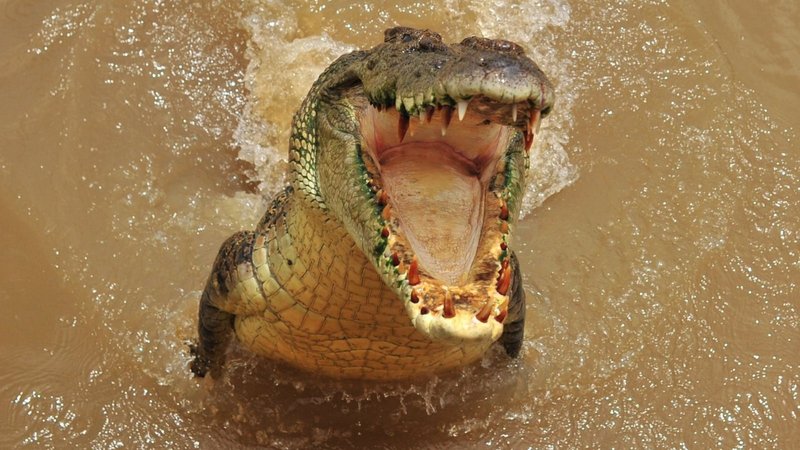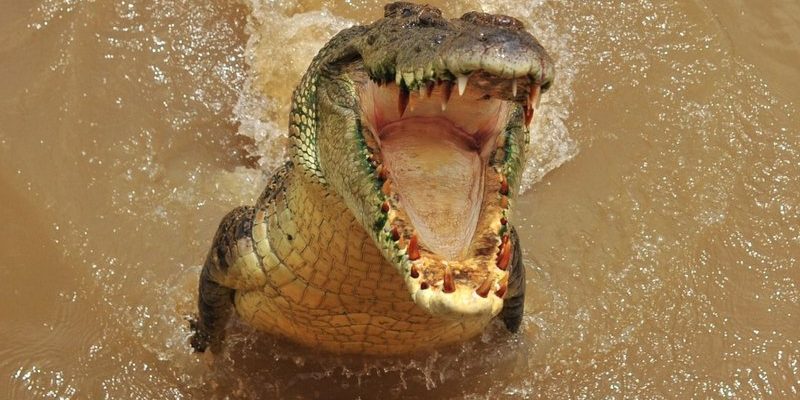
Living in coastal areas, rivers, and swamps, saltwater crocodiles face a range of challenges, from fluctuating salinity levels to temperature extremes. Yet, they remain one of the most resilient reptiles on the planet. Let’s dive into how these ancient animals not only survive but often flourish in environments that seem hostile to many other species.
Understanding Habitat Preferences
Saltwater crocodiles are not picky; they can be found in a variety of habitats, from brackish mangroves to freshwater rivers. Their preferred environments typically include coastlines, estuaries, and rivers, where they can find food and bask in the sun. Here’s why their adaptable nature gives them a competitive edge:
- Brackish Water Tolerance: Unlike many other reptiles, saltwater crocodiles can thrive in both freshwater and saltwater. This ability allows them to navigate different ecosystems easily, which broadens their hunting grounds and increases their chances of finding food.
- Geographic Range: They can be found in regions from Southeast Asia to northern Australia, showcasing their adaptability to various climates. That means they experience everything from tropical warmth to seasonal winds.
- Speedy Swimmers: With powerful tails designed for swimming, these reptiles can travel long distances in search of suitable habitats or prey. Their speed and agility in water make them formidable hunters, no matter where they are.
This combination of habitat preferences and adaptability is a significant reason why saltwater crocodiles can survive in harsh environments where other animals might struggle.
Physiology: The Key to Survival
Let’s get a bit technical—don’t worry, I’ll keep it simple. Saltwater crocodiles have some unique physical traits that help them thrive in challenging conditions. For starters, they possess a very *efficient* excretory system. Their specialized salt glands help them expel excess salt, allowing them to live comfortably in salty waters.
Here’s what makes their physiology impressive:
- Broad Snouts: Their wide snouts are perfect for catching fish and other aquatic prey. It’s like having the best kitchen utensils for your cooking needs!
- Thick Skin: The tough, thick skin protects them from physical damage and keeps them insulated from temperature changes. Think of it like wearing a protective coat and sunscreen at the same time.
- Slow Metabolism: Saltwater crocodiles have a slower metabolic rate, which allows them to survive weeks without eating. This adaptation is crucial during scarce times when food isn’t readily available.
These unique physical features are tailor-made for survival, making saltwater crocodiles one of the most efficient predators in their environment.
Feeding Strategies in Harsh Environments
The saltwater crocodile is not just an opportunistic feeder; it’s a strategic hunter. It can adapt its feeding techniques to match its environment, which is pretty fascinating. Here’s how:
1. Ambush Predator: Saltwater crocodiles are stealthy hunters. They can stay submerged for hours with only their eyes and nostrils above water. This allows them to surprise unsuspecting prey—talk about patience and precision!
2. Diverse Diet: Eating almost anything that crosses their path, they can enjoy a varied diet that includes fish, birds, and even larger mammals. Think of them as the ultimate omnivores of the water.
3. Cooperative Hunting: Sometimes, they even work together to take down larger prey, showcasing a level of social intelligence that is fascinating for reptiles. It’s like a well-coordinated team effort at a buffet!
These feeding strategies are crucial for survival, especially in environments where food sources can be scarce or unpredictable.
Adaptations to Climate Challenges
When we talk about harsh environments, extreme temperatures are often a big factor. Saltwater crocodiles have developed a range of adaptations that help them cope with both heat and cold:
– Basking Behavior: To regulate their body temperature, saltwater crocodiles bask in the sun. This also ensures that they stay warm in cooler months. It’s like how we cozy up in the sun on a chilly day!
– Digging Nests: During breeding season, females dig nests above the waterline to protect their eggs from both flooding and extreme heat. This thoughtful behavior ensures the next generation has the best chance of survival.
– Burrowing: In extremely hot conditions, these reptiles can bury themselves in mud to stay cool. It’s a simple but effective way to beat the heat!
These clever adaptations highlight how saltwater crocodiles not only survive but are incredibly resilient in the face of temperature challenges.
Behavioral Adaptations for Survival
Behavior plays a significant role in the survival of saltwater crocodiles in harsh environments. As fascinating creatures, their behaviors are perfectly evolved for their lifestyle:
– Territorial Nature: Saltwater crocodiles often display territorial behavior, particularly during mating season. This ensures they have access to prime hunting grounds and breeding areas.
– Communication Signals: These reptiles have various vocalizations, like bellows and hisses, to communicate with each other. It’s their way of staying connected and establishing dominance.
– Seasonal Migrations: Some populations of saltwater crocodiles migrate in search of food or nesting sites, demonstrating adaptability in their behavior. Just like how we might travel for summer vacations, they know how to find the best spots.
These behavioral adaptations help saltwater crocodiles not only fend for themselves but also thrive in environments that are anything but friendly.
Conservation Status and Challenges
Despite their hardiness, saltwater crocodiles face challenges that threaten their survival. Habitat loss, hunting, and pollution have put many populations at risk. Here’s how these challenges impact them:
– Habitat Destruction: Deforestation and coastal development reduce the available space for saltwater crocodiles to live and hunt. These changes can lead to increased competition for food and nesting sites.
– Illegal Hunting: Crocodiles are sometimes hunted for their skin and meat. Illegal poaching poses a significant threat to their populations, leading to declines in certain areas.
– Pollution: Chemicals and waste from human activities can contaminate their habitats, disrupting food sources and overall health. It’s like living in a polluted neighborhood—no one wants that!
Conservation efforts are crucial to ensure the survival of these remarkable creatures in their harsh environments, reminding us that we share the planet with them and need to protect their homes.
Saltwater crocodiles are truly remarkable creatures that have adapted to survive in some of the harshest environments on Earth. Their impressive physiology, strategic feeding habits, and clever behavioral adaptations make them incredibly resilient. It’s like they have a master key to unlock survival in a world full of challenges!
As we learn more about these incredible reptiles, it’s essential to recognize the threats they face and the importance of conservation efforts. By understanding how saltwater crocodiles thrive, we can appreciate their place in our ecosystem and work to protect their future. They remind us that life finds a way, even in the toughest conditions—and that’s a lesson worth embracing.

